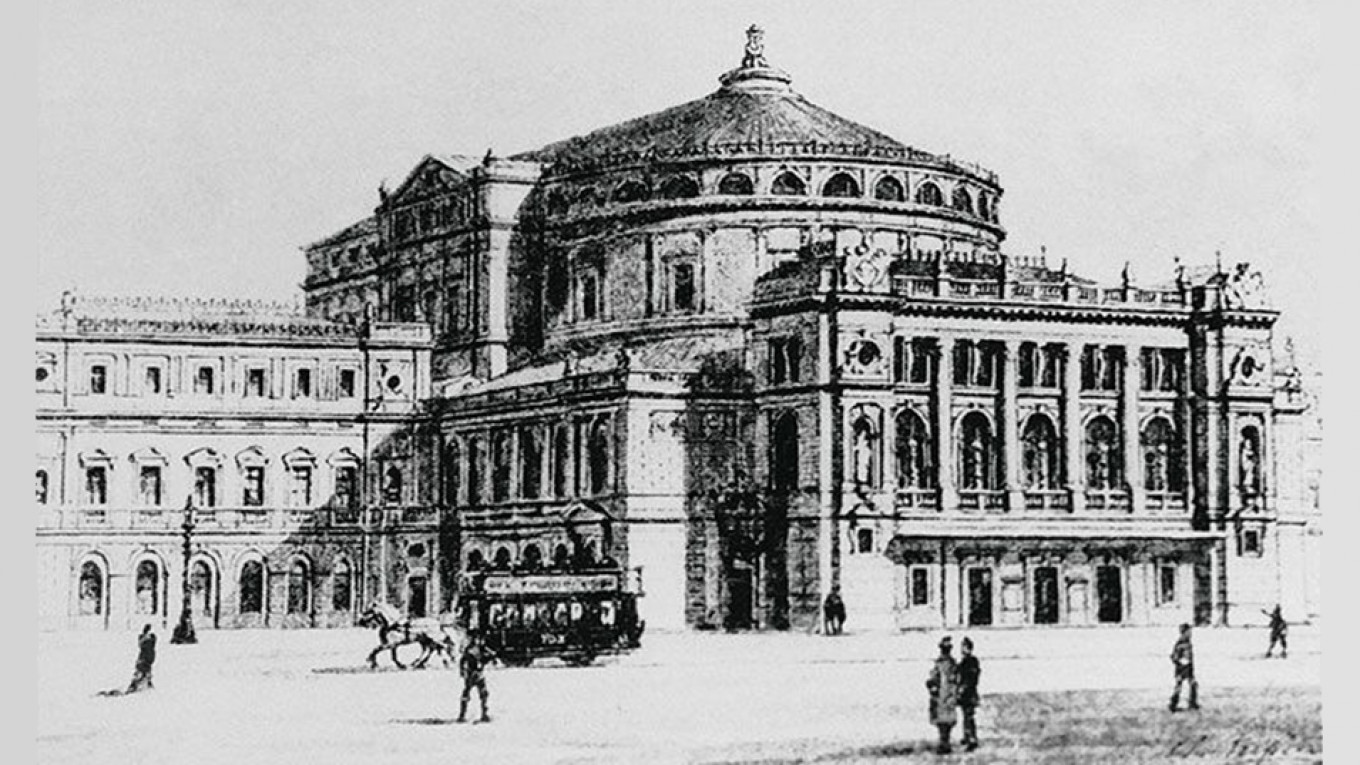
The history of the Mariinsky Theater began on July 12, 1783, when Empress Catherine II approved the establishment of an Imperial drama, opera, and ballet troupe in St. Petersburg. This decree led to the construction of the Bolshoi Stone Theater, the Mariinsky Theater’s predecessor, and placed the first stone in what would become St. Peterbsurg’s Theater Square.
The Bolshoi Stone theater featured performers from Russia, Italy, and France as well as what was then cutting-edge mechanical devices. Poet Alexander Pushkin was a regular visitor in the 1820-30s and enshrined the theater in his poems.
The Mariinsky was built to replace another theater that had been destroyed by a fire on that same site. Opened in 1860, the theater was named after Maria Alexandrovna, the wife of Alexander II, and could seat 1,625 people. On October 2, 1860, Glinka’s “A Life for the Tsar” opera was the first performance on the Mariinsky stage. Since then, the theater has staged world premieres of Russian operas such as Mussorgsky’s “Boris Godunov” (1874); Tchaikovsky’s “The Queen of Spades” (1890) and “Iolanta” (1892); and Rimsky-Korsakov’s “The Golden Cockerel” (1909).
In 1886, the Bolshoi Stone Theater was declared unsafe, and ballets were transferred to the Mariinsky Theater. The Mariinsky stage has since hosted world premieres of Russian ballets such as Prokofiev’s revised “Romeo and Juliet” (1940); Prokofiev’s “Cinderella” (1946); and Khatchaturian’s “Spartacus” (1956).
During the Soviet era the theater was renamed three times and was best-known as the Kirov. But in 1992 it again became the Mariinsky Theater, although now as a “State Academic” rather than “Imperial” theater. Today the theater performs operas, ballets, and symphonies, premiering the upcoming season during Petersburg’s White Nights Festival.






